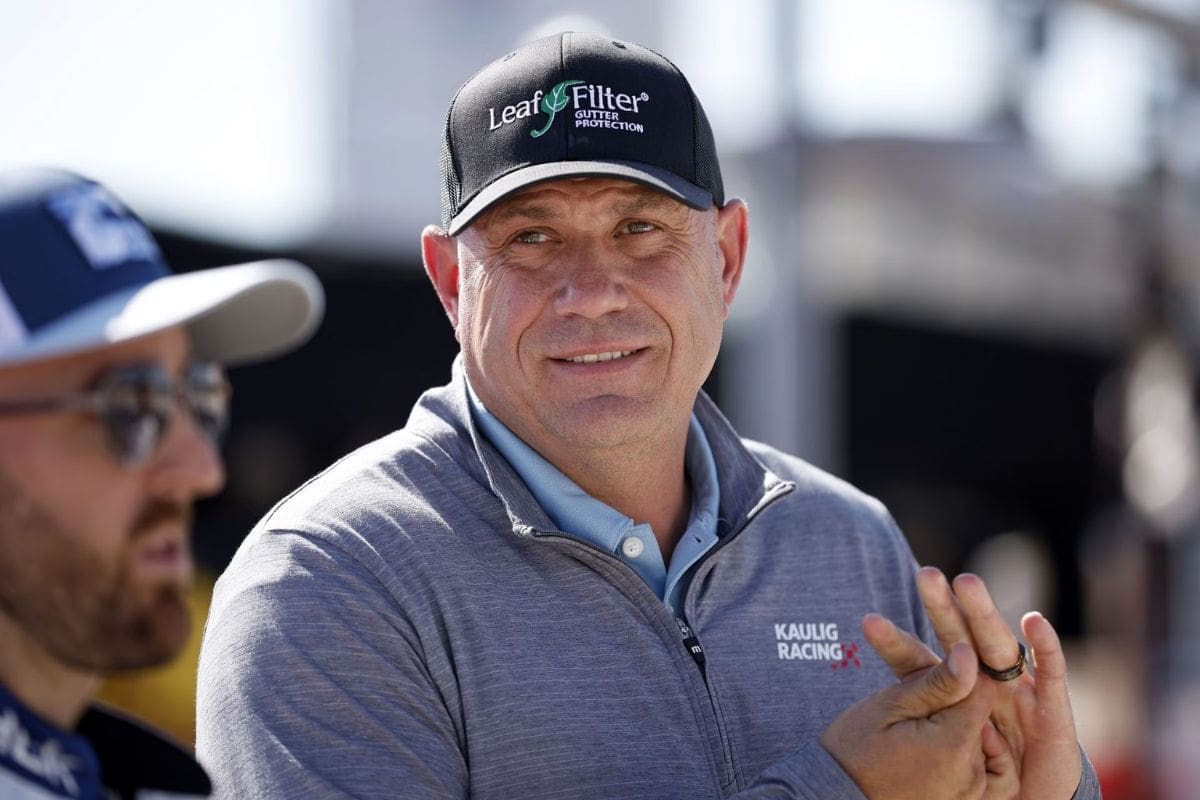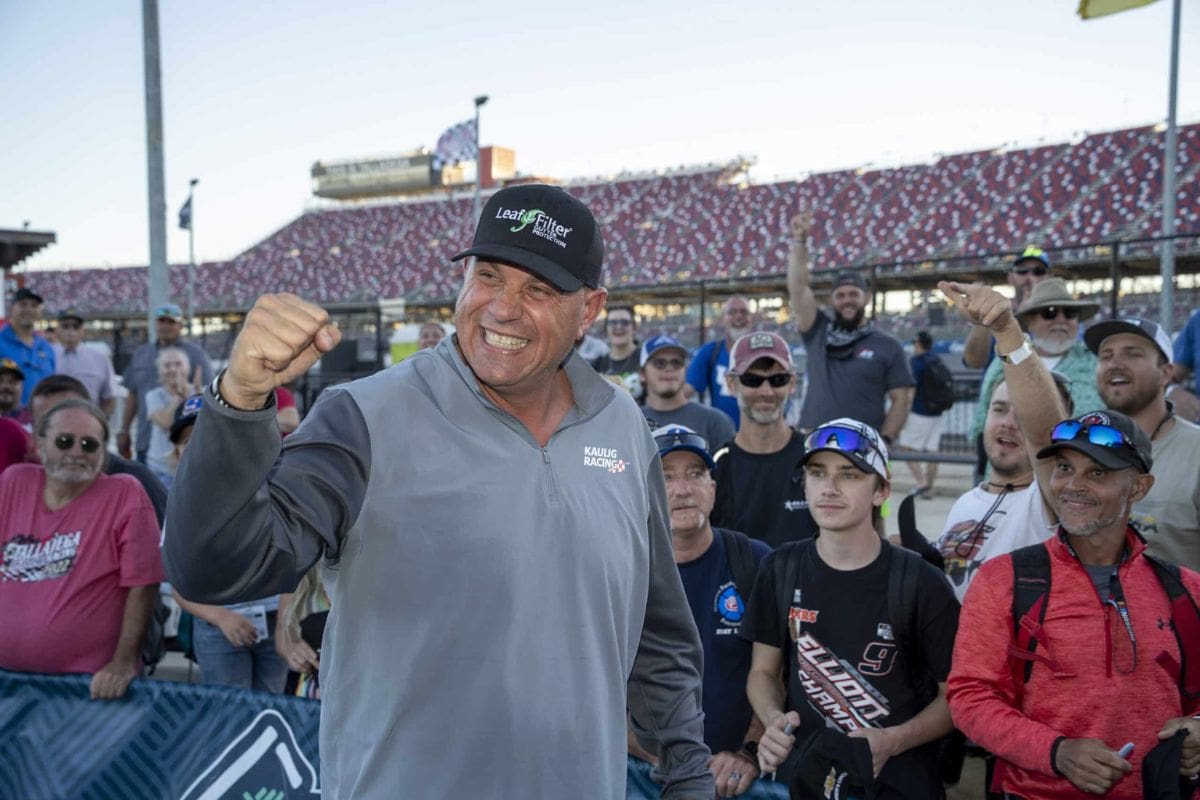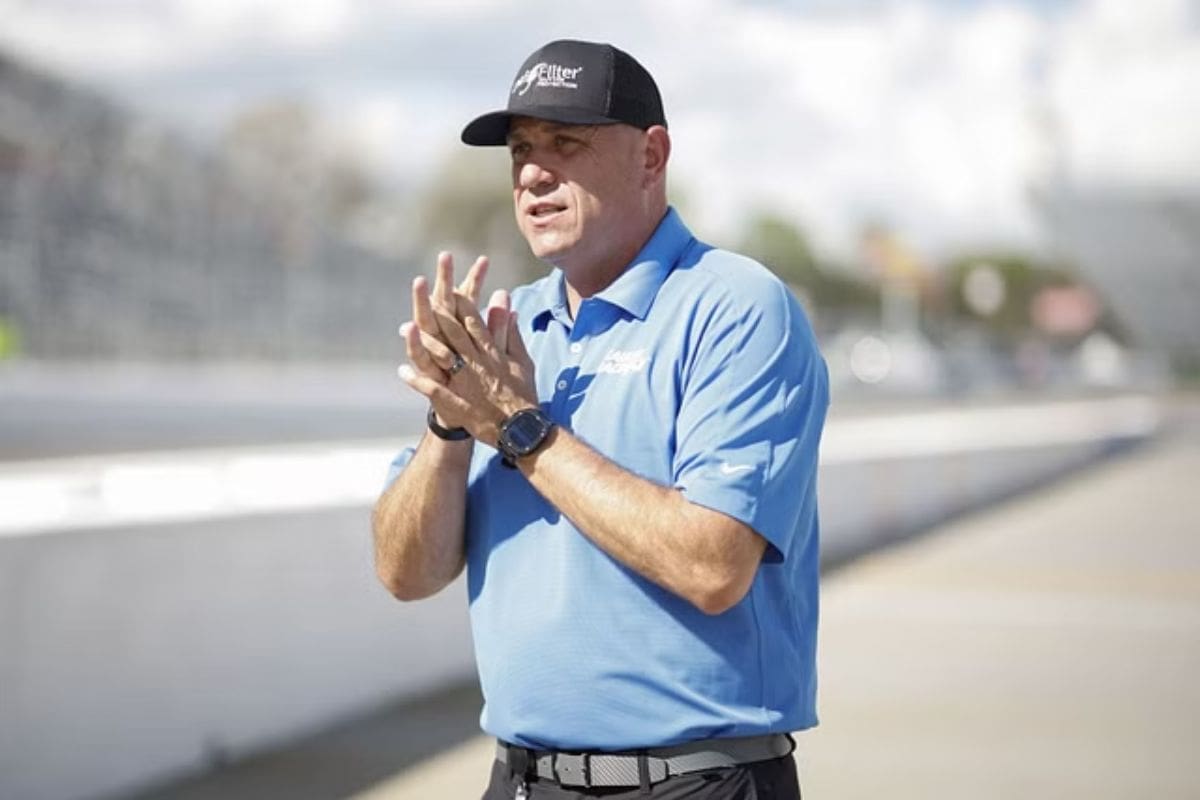Chris Rice Criticizes Hamlin’s Pit Road Reaction: Chris Rice’s critique of Denny Hamlin‘s pit road reaction following his recent loss provides a significant lens through which to examine the vital interplay between emotional control and strategic decision-making in high-stakes racing. Rice’s disapproval centers not just on Hamlin’s outburst but also on the broader implications such reactions can have on a driver’s reputation and team dynamics. By showing the necessity for composure, Rice suggests that poise under pressure is what separates seasoned professionals from those who falter. However, was Hamlin’s response truly a lapse in judgment, or does it reveal deeper issues within his pit strategy?
Key Highlights
- Chris Rice criticizes Hamlin’s aggressive behavior on pit road as counterproductive.
- Rice believes Hamlin’s emotional outbursts reduce driver reputation and team performance.
- Rice demands for maintaining composure to navigate the racing environment effectively.
- Hamlin’s pit road reaction demonstrated poor decision-making and lack of calmness.
- Rice emphasizes the need for better pit strategy and measured approaches in racing.
Could Denny Hamlin Have Avoided the Meltdown?
Analyzing the pit stall maps from the Coca-Cola 600, it becomes evident that Denny Hamlin had the opportunity to avoid the confrontation by simply backing up and allowing Chris Buescher to exit the pit road without incident. The pit stall layout clearly showed a feasible path for Hamlin to reverse slightly, providing Buescher with the necessary clearance to maneuver his car without breaching any spatial boundaries. This strategic decision, however, was overlooked in the heat of the moment.
Hamlin’s reaction to the incident was not just limited to his on-track behavior but extended to vocal threats over the radio. His explicit warning to Buescher, ‘Park in your f**king box or I will stomp your bumper,’ shows the intensity of his frustration. Such outbursts, while indicative of competitive spirit, may also highlight missed opportunities for more calculated decision-making under pressure. The pit road is undeniably a high-stakes environment where precision and calm judgment are paramount.
Hamlin’s decision not to back up could be attributed to many factors, including competitive drive and the urgency of the race. However, the subsequent peaceful dialogue during the rain break demonstrated that cooler heads could prevail, emphasizing the importance of maintaining composure and strategic thinking even in the most intense moments.

Chris Rice’s Perspective
Chris Rice, President of Kaulig Racing, expressed his disapproval of Denny Hamlin’s reaction, suggesting that such aggressive behavior on pit road is unnecessary and counterproductive. Rice’s perspective is rooted in the belief that emotional outbursts can reduce not only a driver’s reputation but also the team’s collective performance. By maintaining composure, drivers can better navigate the comprehensive racing environment.
Rice emphasized that aggressive tactics on pit road are not uncommon and are often employed as a strategic maneuver. However, he pointed out that the ability to handle these situations with poise is what differentiates seasoned professionals from those who let their emotions dictate their actions. In his view, Hamlin’s reaction was a stark contrast to the level-headed approach that is generally expected in the sport.
Rice recalled instances where drivers faced similar provocations but managed to remain calm and focused. Such composure, according to Rice, is not only a sign of maturity but also a critical component of long-term success in racing. He underscored that the ability to stay cool under pressure can turn potential setbacks into opportunities for growth and improvement.
Pit Road Tactics
While Chris Rice criticizes Denny Hamlin’s conduct, he also acknowledges that aggressive maneuvers on pit road, such as cutting off opponents, are integral to the strategic fabric of NASCAR racing. The pit road is a tactical battleground where fractions of a moment can determine race outcomes. Cutting short your opponents is not merely a matter of personal animus but a high-stakes strategy to gain important track position without the wear and tear of on-track battles.
“He shouldn’t be mad; that is the part of competition. You block the guy in behind you that you’re racing against. You’ve gotta know this Chris, that he’s going to do that. Chris Buescher and that team played that scenario out before they ever came out there.” – (rice)
In NASCAR, the art of pit road tactics often involves calculated risks and precise timing. Drivers and teams meticulously plan their pit stops, aiming to optimize every moment. Blocking a competitor in their pit box, as mentioned by Rice, is a deliberate and premeditated move designed to disrupt the opponent’s rhythm. This tactic is seen as a legitimate approach to gaining an upper hand, reflecting the competitive ethos of the sport.
Chris Rice elaborated on this concept during his appearance on the Door Bumper Clear Podcast, stating, ‘He shouldn’t be mad; that is part of the competition. You block the guy in behind you that you’re racing against.’ This highlights the broader understanding within the racing community that such maneuvers are anticipated, and often, pre-planned strategies. Rice noted that Chris Buescher and his team likely rehearsed this scenario, showcasing the level of preparation involved in executing these tactics effectively.

Chris Rice’s Example
In illustrating his point, Rice recounted a specific instance involving his driver, Daniel Hemric, and Joey Logano, highlighting how strategic pit road maneuvers can greatly influence race dynamics. Rice vividly described how Hemric’s No. 31 car often out-qualified Logano’s No. 22, allowing them to position strategically on the pit road. Hemric’s team would select a pit stall in front of Logano, anticipating that Logano would have to contend with Hemric throughout the race. This tactic paid off as Logano, known for being one of the most challenging drivers to pass on the track and around the pit stalls, had to exert significant effort to navigate around Hemric’s car.
“31 car out qualifies the 22 a lot, and he picks on the front of him, thinking that he’s gonna be running worse. Well, guess what the 22 had to do all night. Drive around the 31, backed the 31 up all night long, and really never got the fussing … Joey Logano is the hardest guy to pass on the racetrack and the hardest guy to pit around the pit stall. So I think that that is part of racing, and if you’re mad, man, so be it.” – (rice)
Rice emphasized that this pit strategy not only disrupted Logano’s rhythm but also showcased the broader strategic elements inherent in racing. He stated, ‘Joey Logano is the hardest guy to pass on the racetrack and the hardest guy to pit around the pit stall. So I think that that is part of racing, and if you’re mad, man, so be it.’ This statement shows the competitive nature of NASCAR, where psychological and tactical warfare plays as critical a role as driving skills.
Hamlin’s Pit Box Challenge
Steering through the intricacies of pit road, Denny Hamlin encountered a unique set of challenges that underscored the nuances of positioning and timing during a race. Hamlin’s predicament stemmed from the intricacies of NASCAR’s pit road dynamics, particularly when maneuvering around the No. 24 car’s pit crew, which frequently complicated his entry. Despite the seemingly advantageous empty space behind his pit box, Hamlin found the situation far from straightforward.
Hamlin elaborated on his difficulties via the Action Detrimental Podcast, explaining the specific timing and spatial constraints he faced.
‘Yes, I had an opening behind me but the timing was challenging every time. Because the 24 was always two spots ahead. He would pull in, his tire changers would run out on the pit road. I would have to maneuver around them, so that would get me swung out to the right, but if I drove straight from where I had to maneuver out to get around his people, I would be nosed into my stall crooked,’
This explanation sheds light on the precision required in pit maneuvers, where even slight miscalculations can cascade into significant delays.
Furthermore, the design and handling characteristics of Next-Gen cars aggravate these challenges, as they are not conducive to sharp turns that would facilitate smoother pit entries. Consequently, Hamlin often found himself with no option but to back out, losing precious time. The only viable long-term solution, according to Hamlin, lies in securing better starting positions through qualifying, thereby gaining access to more strategically favorable pit box selections.

News in Brief: Chris Rice Criticizes Hamlin’s Pit Road Reaction
Chris Rice’s critique shows the critical importance of emotional control and strategic decision-making in racing. Highlighting the impact of impulsive reactions on a driver’s reputation and team performance, Rice demands for a composed demeanor to maintain the sport’s integrity.
Emphasizing flaws in Denny Hamlin’s pit strategy, the analysis suggests that better decision-making during pit stops is crucial. This balanced perspective serves as a reminder of the professionalism that distinguishes seasoned drivers from those prone to emotional outbursts.
Our Reader’s Queries
Q: Who is Chris Rice on NASCAR?
A: From Richard Petty Motorsports to Bill Davis Racing in 2000, then as Crew Chief at RAB Racing from 2011-2015.
Also Read: Chris Rice Brushes Off NASCAR Rumors Amidst Stewart Comparison

